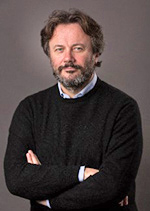 |
||
Home > TERATEC FORUM > Workshops > Workshop 4
Workshop 04 - 09:00 to 12:30 pm
Technologies and applications of the future
Chaired by Christian Saguez, co-founder and honorary president, Teratec
4D additive manufacturing:
the way to program 3D printed objects
By Giancarlo Rizza, Laboratoire des Solides Irradiés (LSI), Institut Polytechnique de Paris (IPP), CEA/DRF/IRAMIS, CNRS
With a market estimated today at 6.5 billion euros and a growing rate of 20% per year, the economical interest for the 3D printing is clear. However, like any new technology, additive manufacturing also has a life cycle: introduction, growth, saturation and decline. Usually, each period of saturation anticipates the appearance of a new technological breakthrough. Here, this new technology is represented by the possibility to additively fabricate behavioral objects. This is the domain of the so-called 4D printing, which is, in a way, the functional form of 3D printing. Instead of printing only static objects, it becomes possible to print functions, or incorporating in structure pieces of code.... This paradigm shift allows a printed object to adapt to its environment and to evolve in a controlled way through the application of stimuli. Even though the growth of 4D printing will foster the development of new scientific and technical knowledge associated to self-assembly, self-adaptability, and self-healing processes, this technology is still in its infancy and several challenges remain. Indeed, the 4D printing technique is not a simple printing process as it requires the combination of several pieces of knowledge and involves multiple research fields. These include a fundamental research on smart materials (polymers, metals and ceramics), the technical development of the printers and the associated codes to adapt them to the materials used and the stimuli introduced, and a methodology based on the design-modeling-simulation triad to ensure that the printed object appropriately responds to external stimuli.
In this talk, after a short historical introduction, I will describe the potentiality of the technique and the challenges we still face. I will then introduce the potential applications and the possible evolution of the market.
 |
Biography : Giancarlo Rizza is a CEA Research Director at the Ecole polytechnique (Laboratoire des Solides Irradiés). He is a specialist of 4D additive manufacturing, electron microscopy, ion-beam irradiations, and nanostructuration of matter. He created and directed for ten years the interdisciplinary microscopy center of the École Polytechnique (CimeX). Within this framework, he coordinated the Nan'eau project (labeled as strategic by the Paris-Saclay University) for the development of a multi-correlative microscopy platform (optical, electronic, and X-rays). He has collaborated with the International Atomic Energy Agency (IAEA). He is a member of the steering committee of the international conference "Radiation Effects in Insulators" (REI), of the Groupement National de Recherche (GdR) NACRE (Nanocrystals in dielectrics for electronics and optics) and of the "Chaire Arts&Sciences" of the Ecole polytechnique-École des Arts Décoratifs, PSL, and the Daniel et Nina Carasso Foundation. He is interested in the dissemination of research-creation practices in scientific conferences as a means of communication with society. |
Register now and get your badge here
- TERATEC Forum is strictly reserved for professionals.
- Participation to exhibition, conferences and workshops is free
- On line registration is obligatory.